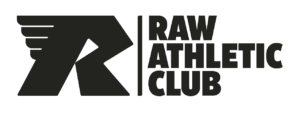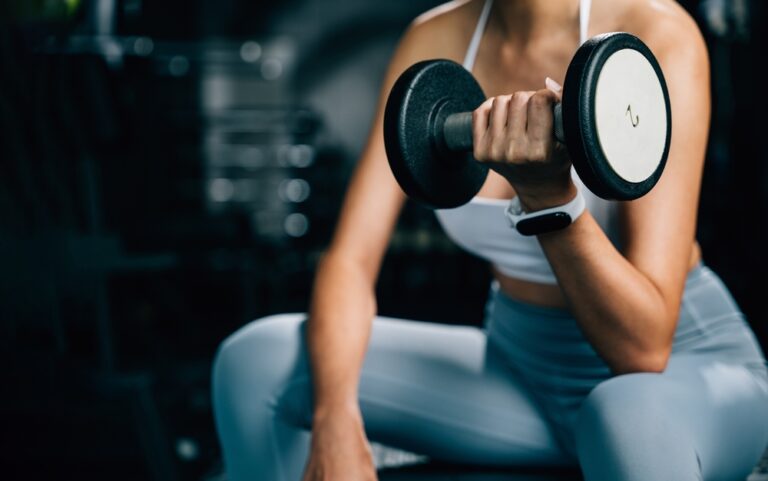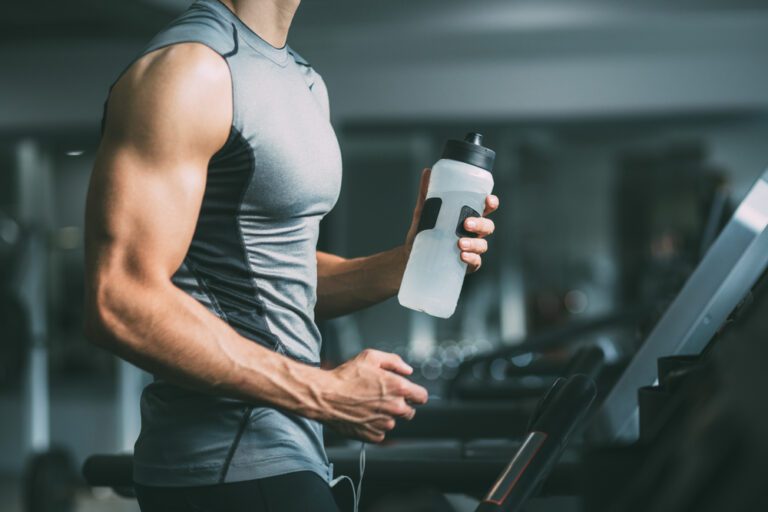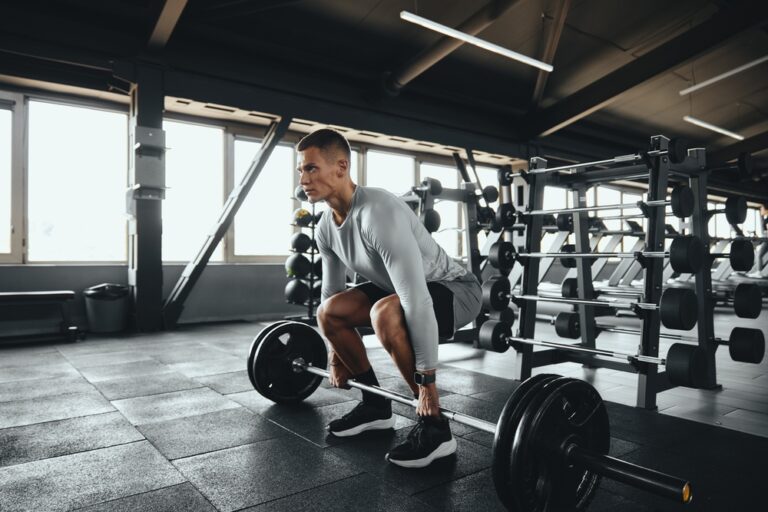When you first decide to start an exercise regimen, it can be a bit overwhelming. It’s hard to know where to start. Then, when you finally walk into a gym, insecurities creep in.
The machines look complicated, you’re not sure what to do next, and everyone around you seems to know exactly what they’re doing.
It’s normal to feel a bit lost at first, but starting your journey doesn’t have to be complicated, stressful, or intimidating.
While there are some things you need to do and understand, you really only need to focus on a few key things to get started. This short guide will break it down and simplify the process.
13 Simple Steps to Starting Your Fitness Journey
1: Get a Physical Exam
Before starting any fitness routine, it’s wise to schedule a physical exam, especially if you have existing health conditions or previous/existing injuries. This check-up will ensure you’re physically clear for exercise.
Additionally, you might want to consider getting hormone blood work done to rule out any hormone imbalances that might affect your ability to lose weight or build muscle effectively.
To find a medical clinic near you that specializes in weight loss and hormone health, click here.
2: Know Your “Why”
This is possibly the most overlooked (but most important) step in your fitness journey. If you don’t have a solid understanding of WHY you want to get in shape, you will lose focus or give up when things get tough.
Having a strong sense of purpose is incredibly powerful. Before getting started, take a moment to ask yourself: Why am I doing this?
Knowing your “why” is the driving force that keeps you going, especially on tough days. The more specific you are, the stronger your motivation will be.
It’s not enough to simply say, “I want to lose weight,” “I need a confidence boost,” “I want to be healthy,” or “I want to be strong.” Picture your life and dig deeper into the reasons behind those desires.
For example, your “why” might be:
- I want to reach a healthy weight so I can stop taking medication for a weight-related medical condition or avoid a family history of heart disease.
- I want to be fit to set a positive example for my kids and play with them without getting winded.
- I want to be stronger so I can easily handle everyday tasks, like lifting my kids without struggling or carrying all the groceries in one trip.
- I want to lose inches and tone up so I can feel confident to take pictures with friends and family.
Once you clearly define your “why,” it becomes much easier to stick to the plan and have the motivation needed to push through any challenges that might come your way.
3: Determine Your Goals
Once you’ve identified your why, it’s time to set some clear, achievable goals. Having goals will give you direction and help you measure progress along the way.
We like to use the S.M.A.R.T method when setting both long and short-term goals, which stands for:
- Specific: Clearly define your goals, and don’t be vague. It’s not enough to say, “I want to get in shape.” A specific goal would be, “I want to lose 10 pounds in the next three months by lifting weights at the gym three times a week and eating a healthy diet with no processed foods.”
- Measurable: Quantify it—whether it’s the number of reps, hours, or steps taken. This helps you see progress and stay motivated along the way.
- Achievable: You’ve gotta be honest with yourself. If you set a goal to lose 30 pounds in a month, or if your goal is to work out six days a week, but you know you don’t have a schedule that allows for that, you are setting yourself up for disappointment.
- Relevant: Focus on goals that truly matter to you and align with your long-term desires. Make sure what you’re aiming for fits into your bigger picture.
- Time-limited: Set a clear deadline for your goal. A specific timeframe keeps you accountable and allows you to assess your progress as you progress. You can always adjust along the way!
Don’t just think about your goals– write them down. Committing your goals to paper helps solidify your intention and makes it easier to track progress. It might also help to share your goals with friends and family. The more encouragement you receive, the more likely you are to stay on track and succeed!
4: Have a Realistic Plan
Once you know your why and have set a few goals, you need a blueprint to get you there. The goal is to always have an efficient workout and maximize your gym time. You don’t want to set out to be able to run a mile without a plan or walk into the gym blind. A realistic plan will help keep you motivated without burning out.
The most effective route is to hire a qualified personal trainer. If that isn’t within your budget, search YouTube or find fitness trainers who post workouts on social media. You could also take group fitness classes.
Whatever plan you choose, make sure it fits your life and current fitness level and is one you can enjoy (or at least not hate and learn to enjoy). If you don’t know what you are doing to reach your goals, attempt to advance too quickly, or absolutely cannot stand what you are doing, you are more likely to become frustrated and quit.
Sample Beginner Workout Splits
Not sure where to start? Here are some beginner-friendly workout schedules that can help build consistency without overwhelming you:
- 3-Day Full Body Split: Full body workouts on Monday, Wednesday, and Friday, with rest or light activity on other days.
- Upper/Lower Split: Alternate between upper body (e.g., Monday/Thursday) and lower body (e.g., Tuesday/Friday).
- Push/Pull/Legs: A slightly more advanced option where you train pushing muscles (chest, shoulders, triceps), pulling muscles (back, biceps), and legs on separate days.
How to Progress Over Time
Progressive overload is key to seeing results. This means gradually increasing the challenge over time by:
- Adding weight
- Doing more reps or sets
- Decreasing rest time
- Improving your form and range of motion
- Keep a log or notes on your workouts so you can track changes over time
When Life Gets in the Way
Sometimes your routine will get disrupted—and that’s normal. If you’re traveling, try short hotel workouts or bodyweight circuits. If you’re slammed with work or life responsibilities, reduce your workout time or frequency, but don’t stop completely. Even 20 minutes of movement is better than nothing.
How to Know If Your Fitness Plan Is Working
You don’t need a six-pack to know you’re making progress. Instead, ask:
- Are you getting stronger or lifting more weight?
- Do you feel more energetic or sleep better?
- Are you being consistent each week?
- Has your mood or confidence improved?
These small wins are powerful indicators that your plan is working, even if the scale isn’t moving yet.
5: Join a Gym and/or Fitness Studio
Not all gyms are created equal, and that’s a good thing. There’s no one-size-fits-all approach to fitness, so choosing a gym that actually fits you makes all the difference in whether you’ll stick with it.
How do you know what gym is right for you?
Start by thinking about your goals, personality, and what kind of environment makes you feel comfortable. Here are some common types of gyms and what they’re best for:
- Big-Box Gyms: These offer a little bit of everything — weights, machines, cardio, classes, and are great if you want variety and flexibility.
- Powerlifting or Strength-Focused Gyms: These usually have platforms, squat racks, chalk, and heavy-duty equipment. They’re often more raw, community-driven, and ideal if you want to focus on serious strength training without the fluff.
- Boutique Fitness Studios: These tend to be more class-based and highly structured, with coaches guiding you every step of the way. They’re great if you thrive on routine, want someone to tell you exactly what to do, and enjoy the accountability of working out with a group.
- CrossFit Boxes: Known for their high-intensity, functional workouts in a tight-knit community. Expect Olympic lifts, rowing, kettlebells, and camaraderie.
- Martial Arts, Boxing, or Climbing Gyms: If you like skill-based workouts and want something more engaging than traditional machines or weights.
- Luxury Gyms: If spa-like vibes, wellness features, and smoothie bars help you feel motivated, this might be the gym for you. Raw Athletic might be the spot for you!
The best way to find your fit is to take advantage of free day passes or intro classes. Tour the space, feel out the vibe, and ask yourself:
- Do I feel comfortable here?
- Do the people and staff seem welcoming?
- Do they have what I need to hit my goals?
- Does this space make me want to come back?
You’re more likely to stay consistent when you genuinely enjoy where you’re training. The “right” gym is the one that fits your life, not just your fitness goals.
6: Purchase A Few Workout Necessities
If you join a gym, there is very little you need to purchase. You don’t need to go all out on gear or spend hundreds of dollars. But a few essentials can make your workouts more effective.
Start with:
- The Right Fit: We aren’t saying you need to spend $100 on a pair of leggings, but polls reveal that many people find that they feel more motivated when they look more pulled together.
Some experts call it “dopamine dressing.” Whatever you wanna call it, what you wear when you workout seems to impact mood, motivation, and performance.
Aesthetics aside, functionality is also important. You want an outfit that’s not too tight or too loose, and that is sweat-absorbent. You also need supportive shoes designed for whatever activity you choose. For example, running requires a different type of shoe than weightlifting.
- A Workout Log: Tracking your workouts (number of sets, reps, rest time between sets, etc.) helps you stay consistent and see your progress. You can go digital and create a folder in your phone notes, download an app, or go old-school with pen and paper. Choose whatever method you will use consistently.
- Activity Tracker: These watches, rings, or bands certainly aren’t necessary, and you never want to rely on how many calories they say you’ve burned to determine your progress. There are way too many factors that influence calorie expenditure, like metabolism and intensity levels.
However, if you can squeeze it into your budget, an activity tracker is a great way to monitor your activity levels and how hard you push yourself during a workout. Some can also track important metrics like sleep and recovery, which are crucial in reaching your goals.
- Lifting Belt: If you lift moderate to heavy weights, have back issues, or want to prevent injury, purchasing a weightlifting belt is a good idea. Belts are designed to keep the body stable and provide support for the lower back during exercises like squats, deadlifts, and bent-over rows.
- Weight Lifting Gloves: These are a great investment if you want wrist support, protection from calluses and blisters, or just more comfort during your training sessions.
- Water Bottle (preferably insulated): Staying hydrated during workouts is essential, and having a reusable, insulated water bottle makes it easier and more convenient—plus it saves money and plastic.
- Towel (for gym-goers): Many gyms require members to bring a towel to wipe down machines after use. A small, quick-dry gym towel is handy and hygienic.
- Headphones / Armband / Workout Playlist: Music is a powerful motivator. A solid playlist or a good pair of wireless earbuds can help you stay focused and energized. If you’re using your phone, an armband or belt can keep it secure.
- Resistance Bands (even for gym-goers): Lightweight and portable, resistance bands are great for warm-ups, mobility work, or adding intensity to bodyweight movements. Great for travel or crowded gyms, too.
- Foam Roller or Massage Ball: For post-workout recovery. These tools help relieve muscle tightness, improve mobility, and reduce soreness.
- Lock for Gym Locker: Basic but easy to forget. If your gym has lockers and you plan to store your stuff, a small combination lock keeps it secure.
If you are working out at home, in addition to the above-mentioned items, you will likely need to invest in some basic gym equipment. What you need depends on how much room you have in your home, your strength, and your goals.
At the very least, you’ll probably want to buy a quality mat, a variety of dumbbells, resistance bands, and an adjustable bench.
7: Educate Yourself on Basic Gym Etiquette
Gym etiquette might not seem like a big deal, but it can help create a positive environment.
Here are some basics:
- Get Off Your Phone: You’re here to work out, not scroll. Plus, lingering on machines while texting or talking on the phone is frustrating for others waiting to use them.
Also, be mindful when taking a gym selfie or filming your gym session. Make sure your gym allows pictures and videos, and never film fellow gym members without their consent.
- Put Away Weights: Don’t leave plates on the equipment or weights scattered around—it’s not only polite, but it helps keep the gym safe.
- Wipe Down Equipment: No one wants to use sweaty equipment. Always wipe down the equipment you use when you are finished.
- Be Aware of Your Space: When using weights or machines, don’t get too close to others. Respect other people’s workout space, especially during busy times.
- Don’t Hog Equipment: If you’re doing multiple sets with long rest periods, let someone else “work in” between sets if they ask, especially during peak hours.
- Use Headphones: If you’re listening to music, watching your favorite show, or listening to a podcast, keep it to yourself. No one wants to be distracted by loud music blaring from their phone.
- Respect Time Limits on Machines: Many gyms have time limits for cardio machines during peak hours. Be mindful of these rules to give everyone a fair chance.
- Be On Time for Group Classes: If you’re attending a group class, show up on time to avoid disrupting the instructor and others. If you’re late, join quietly without interrupting the flow of the class.
What Not to Do in Your Gym:
- Don’t drop weights unnecessarily: Unless you’re in a lifting-specific gym that allows it, avoid slamming or dropping dumbbells and barbells. It can damage equipment, distract others, and even cause injury.
- Don’t offer unsolicited advice: Even if you think someone’s form is off, refrain from giving advice unless they ask. It can come off as rude or make others feel self-conscious.
- Don’t monopolize multiple machines at once: Supersets are great, but not at the expense of other people’s workouts. Stick to one machine or area at a time, especially during busy hours.
- Don’t make excessive noise: Heavy breathing is normal, but excessive grunting or yelling can make the environment uncomfortable for others.
- Don’t stare or make others feel uncomfortable: Be respectful. Everyone is there to focus on their fitness, not to be watched or judged.
- Don’t leave sweat puddles: Even if wiping equipment is mentioned, it’s worth reiterating. Leaving behind sweat without cleaning it up is inconsiderate and unhygienic.
Don’t block walkways or mirror views: Be mindful of where you’re standing, especially during exercises that take up space or involve free weights. Others may need to see the mirror to check their form.
8: Get a Solid Understanding of Gym Equipment
Machines and gym equipment can definitely look confusing—and honestly, a little intimidating—when you’re just starting out. But the key to avoiding injury and getting the most out of your workout is to learn how to use them properly and confidently.
How do you use gym equipment for the first time? Here are a few steps to help you ease into it:
- Start with a gym tour: When you sign up, ask for a walkthrough of the facility. Most gyms offer a free orientation where a staff member will show you how to adjust and use each machine safely.
- Watch quick tutorials: If you’re too shy to ask in person or want a refresher later, look up YouTube videos or your gym’s app (if they have one). Search the name of the machine (usually labeled on the side) + “how to use” for clear, step-by-step instructions.
- Look for diagrams on the machines: Most machines have a small image showing which muscles they target and how to sit or position your body. It’s a great cheat sheet if you’re unsure.
- Go slow and start light: Begin with the lightest weight possible to get a feel for the motion. Focus on smooth, controlled movements—not speed or lifting heavy.
- Use mirrors to check your form: It’s not just for selfies! Mirrors can help you see if your posture and alignment look right. Don’t be afraid to adjust mid-set.
- Ask for help: Gym staff are trained to help, and they genuinely want you to feel comfortable. Say something like, “Hey, I’m new and want to make sure I’m using this right. Could you show me?”
Consider a session or two with a personal trainer: Even just one session with a certified personal trainer can help you learn how to use the machines, set up a beginner-friendly routine, and understand proper form. Think of it as a mini crash course in gym confidence.
9: Learn Proper Form
One of the most important things you can do as a beginner is master proper form. It’s easy to get caught up in the excitement of pushing yourself or lifting heavier weights, but form is everything.
Poor technique increases your risk of injury and can prevent you from seeing optimal results. You’ve got to master the basics to progress safely and effectively. Always start with lighter weights, or even just your body weight, until your form is spot-on.
Hiring a personal trainer is one option and the fastest way to learn proper form, but there are many free resources. Watch YouTube videos from trusted fitness experts or ask a knowledgeable gym-goer or staff member to check your form.
So, what is the correct form for lifting weights? Here are some general guidelines to follow, no matter what lift you’re doing:
- Engage your core: Your abs should be lightly braced (like someone might poke your stomach). This protects your lower back and helps stabilize your entire body.
- Keep a neutral spine: Don’t round your back or hyperextend it. Keep your neck in line with your spine—look slightly ahead, not straight up or down.
- Move with control: Don’t swing the weights or use momentum. Lift and lower with slow, steady movements to work the muscles properly.
- Use a full range of motion: Try to move through the complete motion of the exercise—no half-reps unless you’re doing it intentionally.
- Keep joints aligned: For most lifts, your knees should stay in line with your toes, and your wrists and elbows should stack over each other to prevent strain.
- Breathe properly: Exhale as you lift or push the weight (the hard part), and inhale as you return to the starting position.
Stop if something feels off: Sharp pain, pinching, or uncomfortable joint pressure are signs your form might be off. Don’t push through—pause, reset, and ask for help if needed.
10: Recruit a Gym Buddy or Accountability Partner
Some people are very self-motivated and even prefer to work out alone. However, many people, especially beginners, find it easier to stay motivated when they have someone by their side.
Whether it’s a friend, family member, or someone you meet at the gym, having a gym buddy or accountability partner makes workouts more fun, keeps you on track, and often makes you push harder.
11: Eat to Match Your Goals
Your workouts are only part of the equation. Aligning your diet with your fitness goals is vital for achieving long-term success and maximizing the benefits of your hard work in the gym.
Nutrition plays a crucial role in fitness success. Whether you want to build muscle, lose fat, or enhance endurance, what you eat will either support or hinder your progress.
Prioritize nutrient-dense foods, balance your macronutrients (protein, carbs, and fats), and ensure you consume enough calories to fuel your workouts.
If you are clueless when it comes to nutrition, hiring a nutritionist or personal trainer with expertise in nutrition is your best bet. If that isn’t in your budget, just start with the basics.
Prioritize protein, control your portions, listen to your hunger cues, eliminate processed foods, limit oils when cooking, stop using high-calorie condiments, avoid “empty calories” (soda, juice, sugary coffee drinks, etc.), and drink plenty of water.
There are also plenty of educational articles you can read. If your goal is to build muscle, check out this one. Nutrition for Muscle Gain: What to Eat Before and After Workouts.
12: Don’t Forget About Recovery
Your workouts are important, but recovery is just as important. Allowing your muscles to repair and recover is crucial for building strength and preventing injuries. Ensure you get enough sleep, stay hydrated, incorporate rest days into your routine, and manage stress levels.
Stretching, foam rolling, and engaging in light activity like yoga on recovery days can also accelerate the healing process and keep you feeling rejuvenated. Booking a massage is another great way to prioritize recovery and treat yourself. Massage therapy can relieve muscle tension, improve circulation, and promote relaxation.
Ozone therapy and IV vitamin therapy are other popular choices that many people incorporate into their regimes as needed to enhance recovery and performance.
13: Consider Supplements
While supplements aren’t necessary for everyone, they can be beneficial depending on your goals. For instance, a quality protein powder can help you meet your daily protein needs, while supplements like creatine can enhance performance and recovery, and electrolytes can support hydration and muscle function during intense workouts.
A pre-workout with the right ingredients is another supplement to consider. It can provide a boost of energy and focus, helping you not only get to the gym but get the most out of your training sessions.
Additionally, most people struggle to get enough micronutrients from their diet alone, which is crucial for overall health, especially for those who are active. Consider incorporating a quality daily multivitamin or greens supplement to fill in those nutritional gaps and support your fitness journey.
Conclusion
One of the most beneficial things you can do for yourself is exercise. We hope these tips help ease some of the stress that often comes with getting started.
Just remember, your fitness journey doesn’t have to be complicated or overwhelming– it just needs to begin! There isn’t a right or wrong way to go about it. The most important thing is to find a routine you can be consistent with and take the first step.
If you are in the Stuart or Port St. Lucie, Florida, area and looking for a gym, we’d love to have you join our Raw Athletic Club family! Give us a call for more information, or stop by for a tour at our exclusive training and wellness facility.



